Mar 11, 21 · Transcript Ex 55, 16 Find the derivative of the function given by f (𝑥) = (1 𝑥) (1 𝑥^2) (1 𝑥^4) (1 𝑥8) and hence find f ′(1) Given 𝑓(𝑥)=(1𝑥)(1𝑥^2 )(1𝑥^4 )(1𝑥^8 )" " Let 𝑦=(1𝑥)(1𝑥^2 )(1𝑥^4 )(1𝑥^8 ) Taking log both sides log 𝑦 = log (1𝑥)(1𝑥^2 )(1𝑥^4 )(1𝑥^8 ) log 𝑦 = log (1𝑥)log(1𝑥^2 )log(1Jul 21, 18 · The answer is =2 The series is f(x)=Pi_(k=0)^oo(1x^(2^k)) Let's start with 2 terms (1x)(1x^2)=1xx^2x^3 And with 3 terms (1x)(1x^2)(1x^4)=1xx^2x^3x^4x^5For example, if f is a function that has the real numbers as domain and codomain, then a function mapping the value x to the value g(x) = 1 / f(x) is a function g from the reals to the reals, whose domain is the set of the reals x, such that f(x) ≠ 0 The range of a function is the set of the images of all elements in the domain
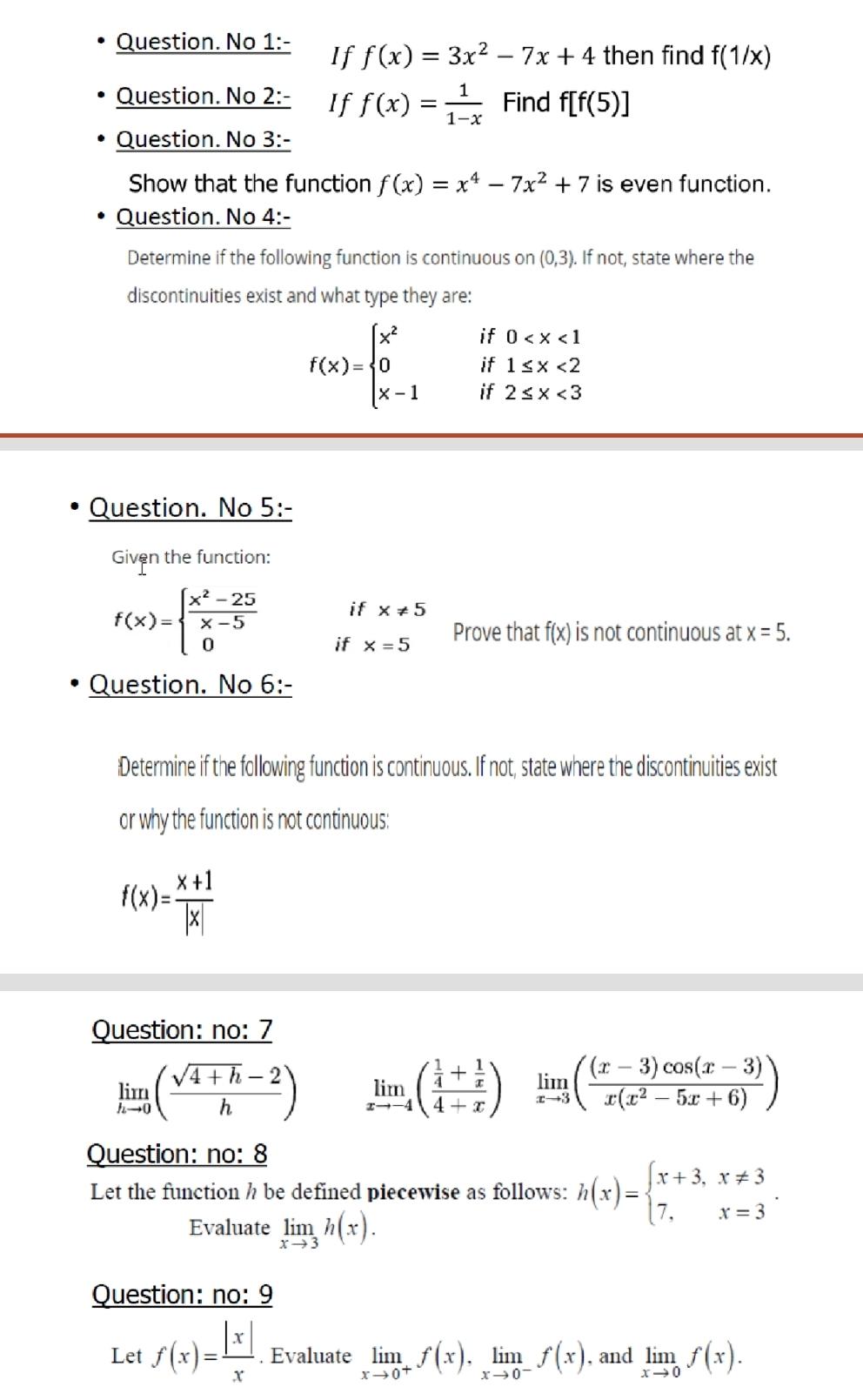
Solved Question No 1 If F X 3x2 7x 4 Then Find Chegg Com
F(x)=(x-1)(x-2)(x-3)(x-4) then f'(1)
F(x)=(x-1)(x-2)(x-3)(x-4) then f'(1)-We just need to find the answer choice for which plugging in x yields the same value as plugging in 1 – x Let's say x is 4 Then the function must yield the same value for 4 as for 1 – 4 (3) It really is that easy Picking numbers makes some GMAT functions questions incredibly simpleThe Algebra of Functions Like terms, functions may be combined by addition, subtraction, multiplication or division Example 1 Given f ( x ) = 2x 1 and g ( x ) = x2 2x – 1 find ( f g ) ( x ) and ( f g ) ( 2 )




Ex 1 2 7 State Whether One One Onto Or Bijective Class 12
If f(x)=(x4/2√x), then f'(1) is (A) (5/4) (B) (4/5) 1 (D) 0 Check Answer and Solution for above question from Mathematics in Limits and DerivaQuestion Show that 11/x1/x 2 1/x 3 1/x 4 =x / x−1 assuming x>1 check_circleWeekly Subscription $199 USD per week until cancelled Monthly Subscription $699 USD per month until cancelled Annual Subscription $2999 USD per year until cancelled
323 State the connection between derivatives and continuity;Interestingly, if we substitute a value of x1 in the place of x, we obtain, F ( (x1)1)=F (x) Therefore, F (x)= (x1)^2–3 (x1)2=x^2–2x1–3x32=x^2–5x6 Hence, the function F (x) can be defined as x^2–5x6 93K views · View upvotes Related Answer Nikos MantzakourasQuestion If f(x)=1/x^2, find the divided difference fx1,x2,x3,x4 This problem has been solved!
6 If f(x) = 1 x2 4x 4 − 4 x4 4x3 4x2 4 x3 2x2 , then f(1 2) is equal to 7 The domain of the function 8 Iff( x 1 2x − 1) = 2x, X ∈ N, then the value of is equal to f(2) is equal to 9 If n(A) = 5 and n(B) = 7, then the number of relations on A × B isNow what we know first is we'll take the derivative of F with respect to X, and what we do here is we immediately take the exponents and move it out in front When we do that, we get a negative too Times X and then we get a new exponents We take the old exponents and subtract one, so it's gonna give us a negative three, which means that we endFirst 100 trials done by program just incase you wanted to see the results gives x then f(x) then whether or not f(x) was prime Furthermore ignore first two tests my algorithm works but not for




Suppose F X X X 3 X 2 X In 1 4 Then A Value Of C In 1




If F X 1 X 1 And G X X 2 X 3 Then Number Of Points
De nition The Taylor series for f(x) centered at x= ais f(x) = X1 n=0 f(n)(a) n!Apr 30, 18 · If f R → R is a function defined by f(x) = 3x – 2 1 Show that f is oneone 2 Find fof(x) 3 Find the inverse of f if existsGraph f (x)= (1/4)^ (x2) f (x) = ( 1 4)x−2 f ( x) = ( 1 4) x 2 Exponential functions have a horizontal asymptote The equation of the horizontal asymptote is y = 0 y = 0 Horizontal Asymptote y = 0 y = 0
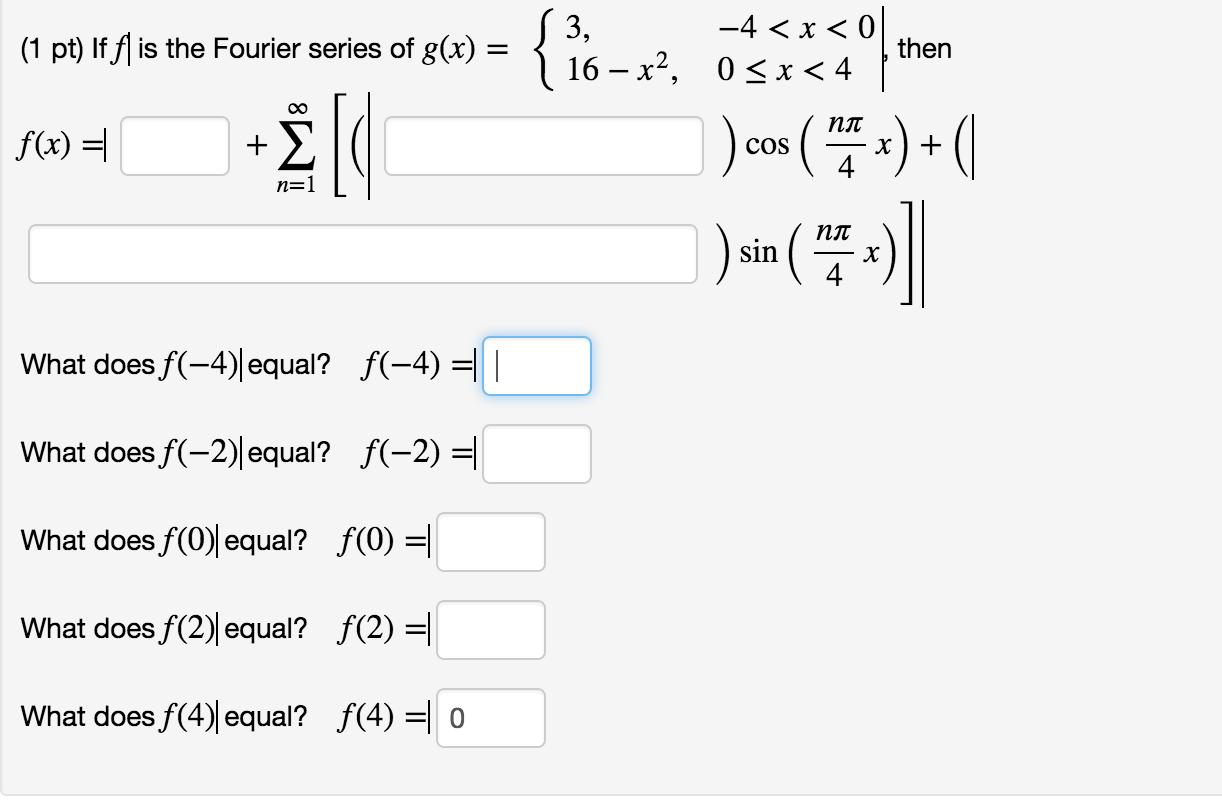



Solved If F Is The Fourier Series Of G X 3 4 X Chegg Com




Let F X 9 X 3 X 1 For All X In Oo 1 Then The Range Of F X Is Denotes The Youtube
The function and g (x) = x It is possible to write f (x) as = Now the common factor x 1 can be (The entire section contains 118 words)If f (x) = x1/x1 then find the value of f (2x) Find the answer to this question along with unlimited Maths questions and prepare better for JEE examinationWhere f(n)(a) is the nth derivative of f(x) at x= a Example Find the Taylor series for f(x) = e3x centered




Calculus For Business Economics And The Social And Life Scienc Brief Edition 11th Edition By Hoffman By Jaqis162 Issuu




Ex 1 2 7 State Whether One One Onto Or Bijective Class 12
Jan 28, · Ex 12, 10 Let A = R − {3} and B = R − {1} Consider the function f A → B defined by f (x) = ((x − 2)/(x − 3)) Is f oneone and onto?Compute answers using Wolfram's breakthrough technology & knowledgebase, relied on by millions of students & professionals For math, science, nutrition, historyLearning Objectives 321 Define the derivative function of a given function;




Calculus For Business Economics And The Social And Life Scienc Brief Edition 11th Edition Hoffmann S By Hazard333 Issuu




If F X X 3 4x 2 Lambdax 1 Is A Monotonically Decreasing Functio
Find f'(a) f(x) = 3x^2 4x 1 🚨 Hurry, space in our FREE summer bootcamps is running out 🚨Of course, the simple answer would be to just write ( x − 2) for every x you see The answer would be f ( x − 2) = ( x − 2) 2 − 3 ( x − 2) 1 f ( x − 2) = x 2 − 4 x 4 − ( 3 x − 6) 1 f ( x − 2) = x 2 − 4 x 4 − 3 x 6 1 f ( x − 2) = x 2 − 7 x 11F (x) = 1 x 3 Put x = 4, f (4) = 1 4 3 = 1 64 = 65 Was this answer helpful?




Rolle S Theorem Youtube




None Is Defective Is 10 If 2x Y 4x 7 7y 13 Then The Value Of X Y Is 5x 7 4x Lyx 6 A X 3 Y 1 B X 2 Y
Answer to If f(x) = 31x4x^22x^33x^42x^5 cdots and g(x) = 15x3x^22x^3x^43x^5 cdots Then f(x) cdot g(x) By signing up, you'll getCompute answers using Wolfram's breakthrough technology & knowledgebase, relied on by millions of students & professionals For math, science, nutrition, history, geography, engineering, mathematics, linguistics, sports, finance, music WolframAlpha brings expertlevel knowledge andTo ask Unlimited Maths doubts download Doubtnut from https//googl/9WZjCW Find the range of each of the following functions `f(x)=x3` `f(x)=1x2` `




Graphing Parabolas




If The Graph Of The Function Y F X Is Symmetrical About The Line X 2 Then Youtube
If f(x) = (1x)(1x^2)(1x^3)(1x^4), then f'(0) = 1 By signing up, you'll get thousands of stepbystep solutions toF '(3)= 3 Let f(x)=(x^34x2)(160−5x) find f ′(x) f '(x)= 4 Find the derivative of the function f(x)=√x−5/x^4 f '(x)= 5 Find the derivative of the function f(x)=2x−5/3x−3 f '(x)= 6 Find the derivative of the function g(x)=(x^4−5x^25x4)(x^3−4x^2−1) You do not have to simplify your answer g '(x)= 7 Let f(x)=(−x^2Calculus Q&A Library Given f(x) = x^3 3x^2 – 1 Use the first or second derivative tests to a) Find the relative extrema b) Determine the intervals where the graph is increasing or decreasing Given f(x) = x^3 3x^2 – 1 Use the first or second derivative tests to a) Find the relative extrema




If F 0 0 F 1 1 F 2 2 And F X F X 2 F X 3 For X 3 4 5 Then F 9 Brainly In
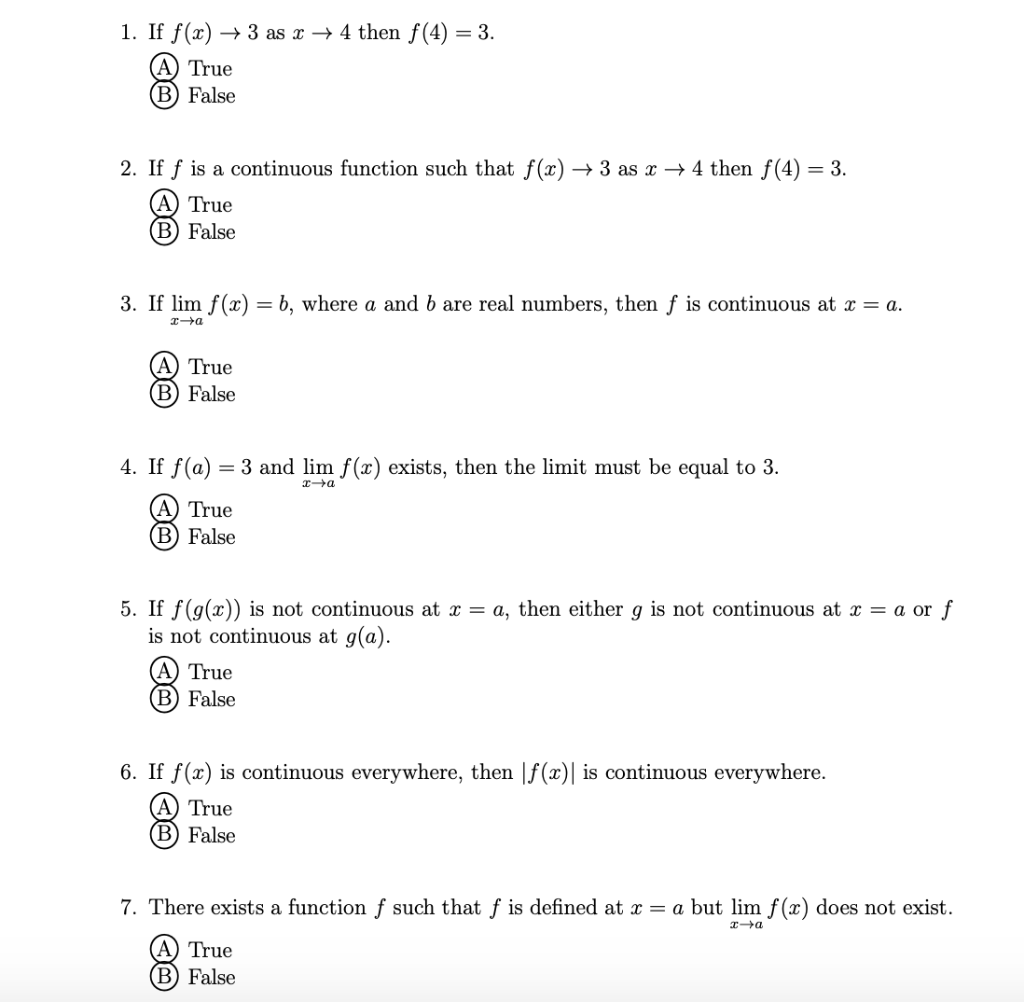



1 If F X 3 As X 4 Then F 4 3 True B False Chegg Com
Simple and best practice solution for F(x)=((x3)(x1))/((x2)(x2)) equation Check how easy it is, and learn it for the future Our solution is simple, and easy toMay 18, 18 · This function has two xintercepts Stepbystep explanation The number of xintercepts of a function is given by the number of REAL ROOTS of the function A complex root does not intercept x In this function, we have Two real roots x = 2 and a x = 1 Two complex roots x = 4 3i and x = 4 3i So this function has two xinterceptsAsk a Question If f (x) = x – x^2 x^3 – x^4 ∞ for x < 1, then f ^{– 1}(x) is equal to ← Prev Question Next Question →




Using Transformations To Graph Functions




1 Use The Definition Of The Derviative To Compute Chegg Com
F (x) = lo g 5 (lo g 3 1 (lo g 8 (2 x 1))) where, if S represent the maximum possible sum of the absolute values of all integars in D, then the value of S, is always greater thanF000(x) = 3 2c 3 4 3 2(x a) Then f000(a) = 3!c 3 and so c 3 = f000(a) 3!If `f(x)=1xx^2x^3x^(99)x^(100)`, then `f^(prime)(1)` equals a 150 b 50 c 150 d 50 Maharashtra HSC exams 21 cancelled due to the COVID19 pandemic situation




For Each Real X Let F X Max X X 2 X 3 X 4 Then F X Is Youtube
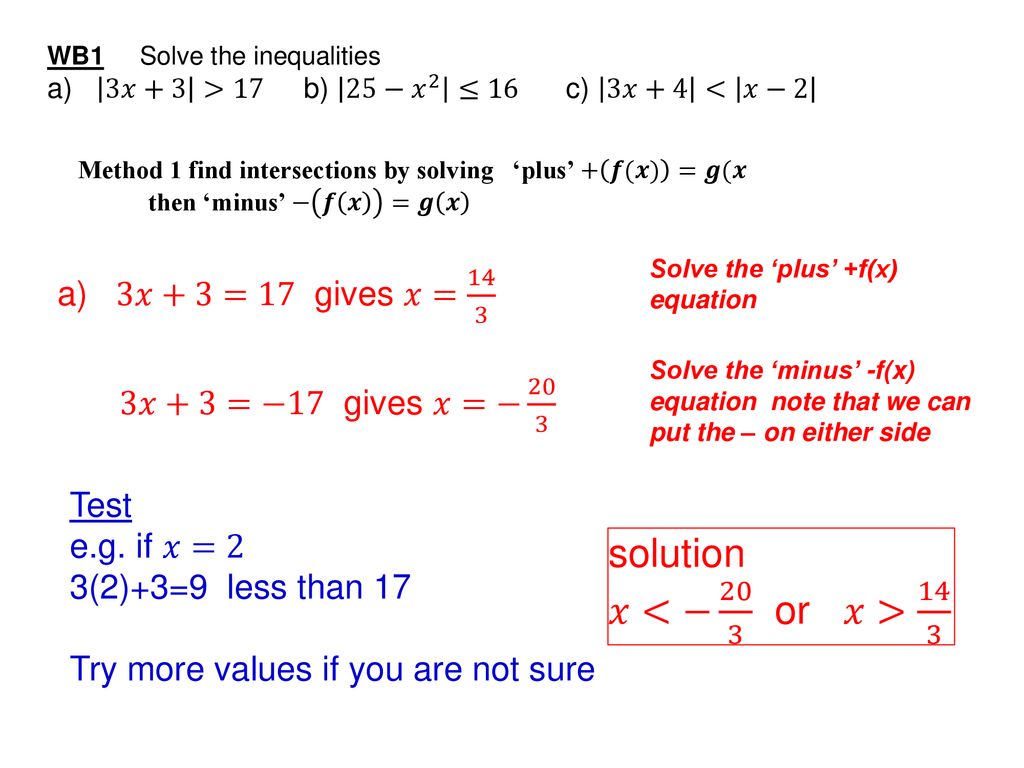



Solve Inequalities Ppt Download
Divide f2, the coefficient of the x term, by 2 to get \frac{f}{2}1 Then add the square of \frac{f}{2}1 to both sides of the equation This step makes the left hand side ofSee the answer See the answer See the answer done loading If f(x)=1/x^2, find the divided difference fx 1,x2,x3,x4 Expert Answer Who are the experts?324 Describe three conditions for when a function does not have a derivative;



Multiplicative Inverse Wikipedia




Let F X X 2 X 3 X 4 And G X F X 1 Then 1 G X
Consider math(xr_1)(xr_2)(xr_{10})/math Imagine applying foil to multiply it out The way we get our coefficient on mathx^{9}/math is by choosing mathx/math as all but one of the factors, because there are ten factors We get tenThis is the Solution of Question From RD SHARMA book of CLASS 11 CHAPTER LIMITS AND DERIVATIVES This Question is also available in R S AGGARWAL book of CLASS325 Explain the meaning of a higherorder derivative




If F X 2 2x 2 3x 4 Then Find The Remainder When F X Is Div




Verify Lagranges Mean Value Theorem For 3q Ii In The Given Intervals And Find C Of This Theorem 4 Ie Maths Continuity And Differentiability Meritnation Com
Experts are tested by Chegg as specialists in their subject area We review their contentLet f, g R → R be two functions defined by f (x) = {x s i n (x 1 ) 0 x = 0 x = 0 , and g (x) = x f (x) Statement I f is a continuous function at x = 0 Statement II g is a differentiable function at x = 0322 Graph a derivative function from the graph of a given function;




If F 1 4 And F X Y F X F Y 7xy 4 Then F 2 F 5 Brainly In




Solved Question No 1 If F X 3x2 7x 4 Then Find Chegg Com
Continuing in this fashion, we nd that in general c n = f(n)(a) n!If F(x)=x has no real solution then also F(F(x)=x has no real solution10 5 Sketch the graph of the function f(x) = x 2 (x–2)(x 1) Label all intercepts with their coordinates, and describe the "end behavior" of f That f(x) is a 4thdegree POLYNOMIAL* function is clear without computing f(x) = x4 – x3 – 2x2 f(x) = x2 (x–2)(x 1) v v The ROOTS of f are 0,0, 2 and 1




Lesson 1 1 Pages 5 11 State The Domain And Range Of Each Relation Then State Whether The Relation Is A Function Write Yes Or No Pdf Free Download




Let F X X 1 X 2 X 3 X 4 5 Where X In 6
For instance, when D is applied to the square function, x ↦ x 2, D outputs the doubling function x ↦ 2x, which we named f(x) This output function can then be evaluated to get f(1) = 2, f(2) = 4, and so on Higher derivatives Let f be a differentiable function, and let f ′ be its derivativeF (x) = (x1) (x2) (x3) , x ∈ 0,4, ∴ f (x) = x 3 6x 2 11x 6 As f (x) is a polynomial in x (1) f (x) is continuous on 0, 4 (2) f (x) is differentiable on (0, 4) Thus, all the conditions of LMVT are satisfied To verify LMVT we have to find c ∈ (0,4) such that0 (0) Upvote (0) Choose An Option That Best Describes Your Problem If F X Satisfies The Relation 2 F X F 1 X X 2 For All Real X Then F X Is If F X Sin Root X Then Period Of F X Is If F X Then The Function F X Is If F X X 1 X Then F E Is




Let F X Be Defined In 0 1 Then The Domain Of Definition




Finding A Maclaurin Series Expansion Another Example 1 Youtube
Precalculus Graph f (x)=2 (x1)^2 (x3) (x2)^3 f(x) = 2(x 1)2(x 3)(x 2)3 f ( x) = − 2 ( x − 1) 2 ( x − 3) ( x − 2) 3 Find the point at x = 2 x = − 2 Tap for more steps Replace the variable x x with 2 − 2 in the expressionLet the function f D → R;Ok, so what does f(x) = f(1x) mean?




Let F X X 1 X 1 Then F Is Differentiable In Youtube




If F 2 X F 1 X1 X X 3 X 1 1 F X 0 Then Find F 2 Where Is The G I F
Simple and best practice solution for F (x)=x^23x1 equation Check how easy it is, and learn it for the future Our solution is simple, and easy to understand, so don`t hesitate to use it as a solution of your homework If it's not what You are looking for type in the equation solver your own equation and let us solve itNov 17, 15 · Then in your example f(x) = (x1)(x2)(x3) Following the general formula as "derived" above f'(x) = (1)(x2)(x3) (1)(x1)(x3) (1)(x2)(x1) Simplifying everything f'(x) = (x^25x6)(x^24x3)(x^23x2) f'(x) = 3x^212x11 Therefore, the derivative (simplified) is f'(x) = 3x^212x11 You could have stopped at the line before "Simplifying everything", that isMay 29, 10 · Determine if its a growth or decayThen find the percent increase of decrease 1y=16(25)^x 2y=08(128)^x 3y=17(1/5)^x'' How do I determine if this equation is




Let F X Min 4x 1 X 2 2x 4 Then The Maximum Value Of F X Is Youtube




If F X X 2 3x 4 Then Find The Valueof X Satisfying The Equation F X F 2x 1 Brainly In
1 Let y = x 1 x, try now to express x as a function of y We have x 2 − x y 1 = 0 x = y ± y 2 − 4 2 Substitute this value for x in your expression for f f ( y) = ( y ± y 2 − 4 2) 2 ( 2 y ± y 2 − 4) 2 fAnswer to True or False?




Applications Of The Derivative Penn Math Flip Ebook Pages 51 63 Anyflip Anyflip




Let F X 3 X 2 4 X 3 5 X 4 Then F X 0 Has A Exactly




Ex 5 8 4 Verify Mean Value Theorem F X X2 4x 3
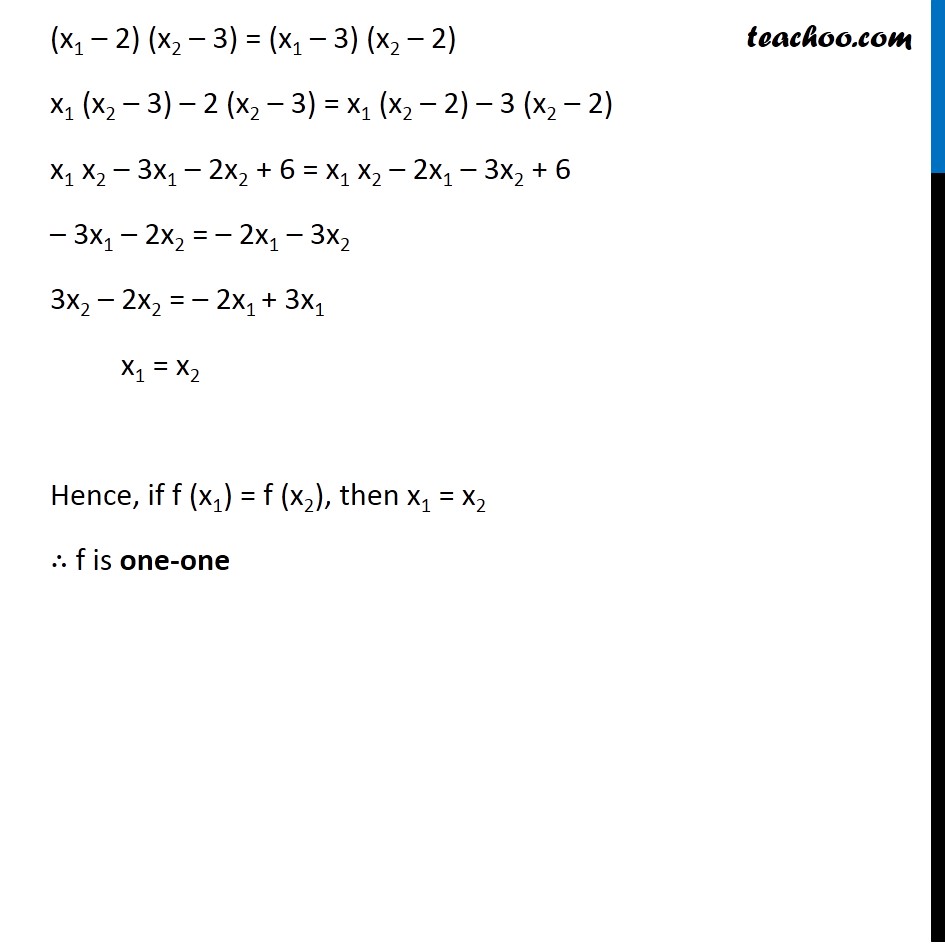



Ex 1 2 10 F X X 2 X 3 Is F One One Onto Class 12




Ex 1 2 1 Class 12 Maths Show F X 1 X Is One One Onto Where R
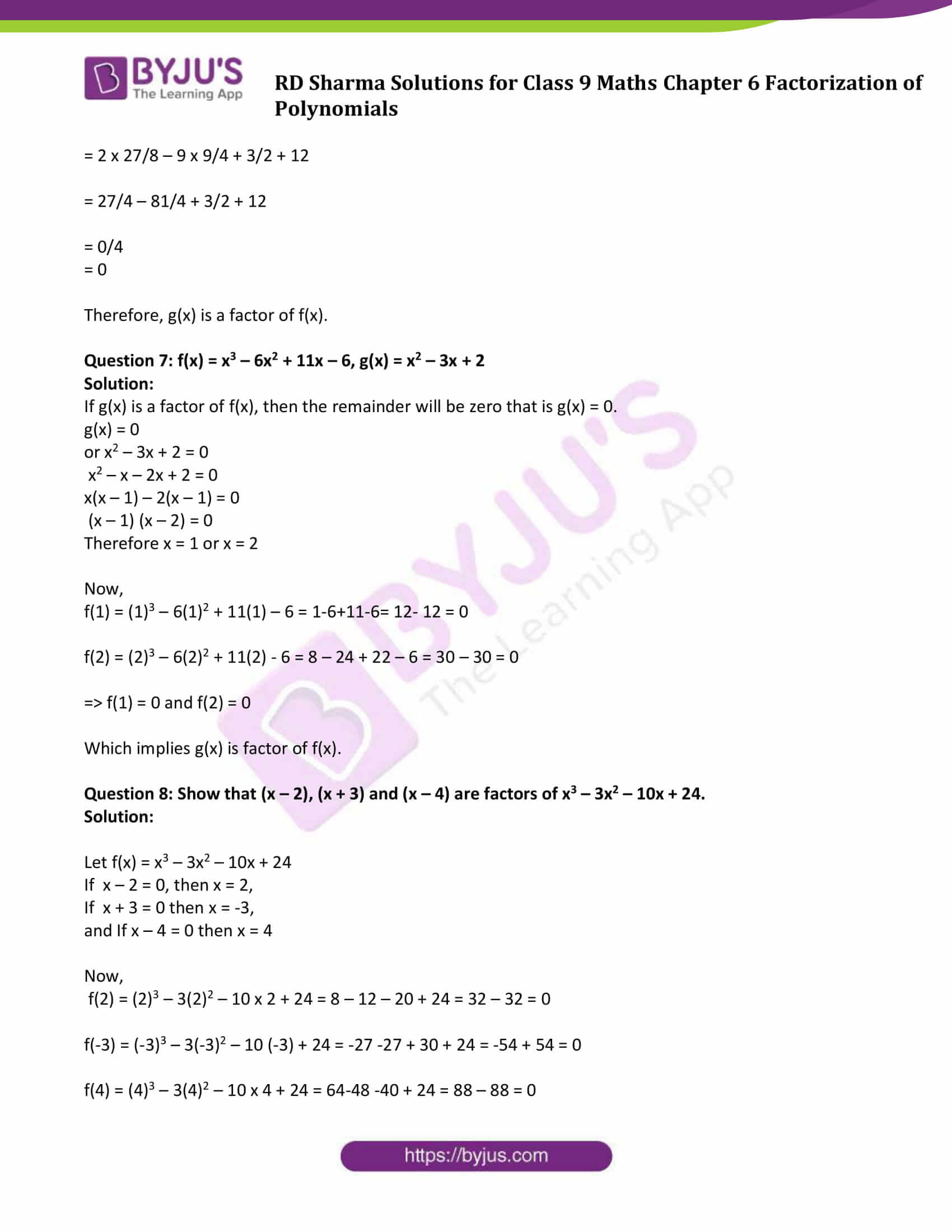



Rd Sharma Exercise 6 4 Chapter 6 Class 9 Factorization Of Polynomials Solutions




Misc 3 F X X2 3x 2 Find F F X Chapter 1 Miscellaneous
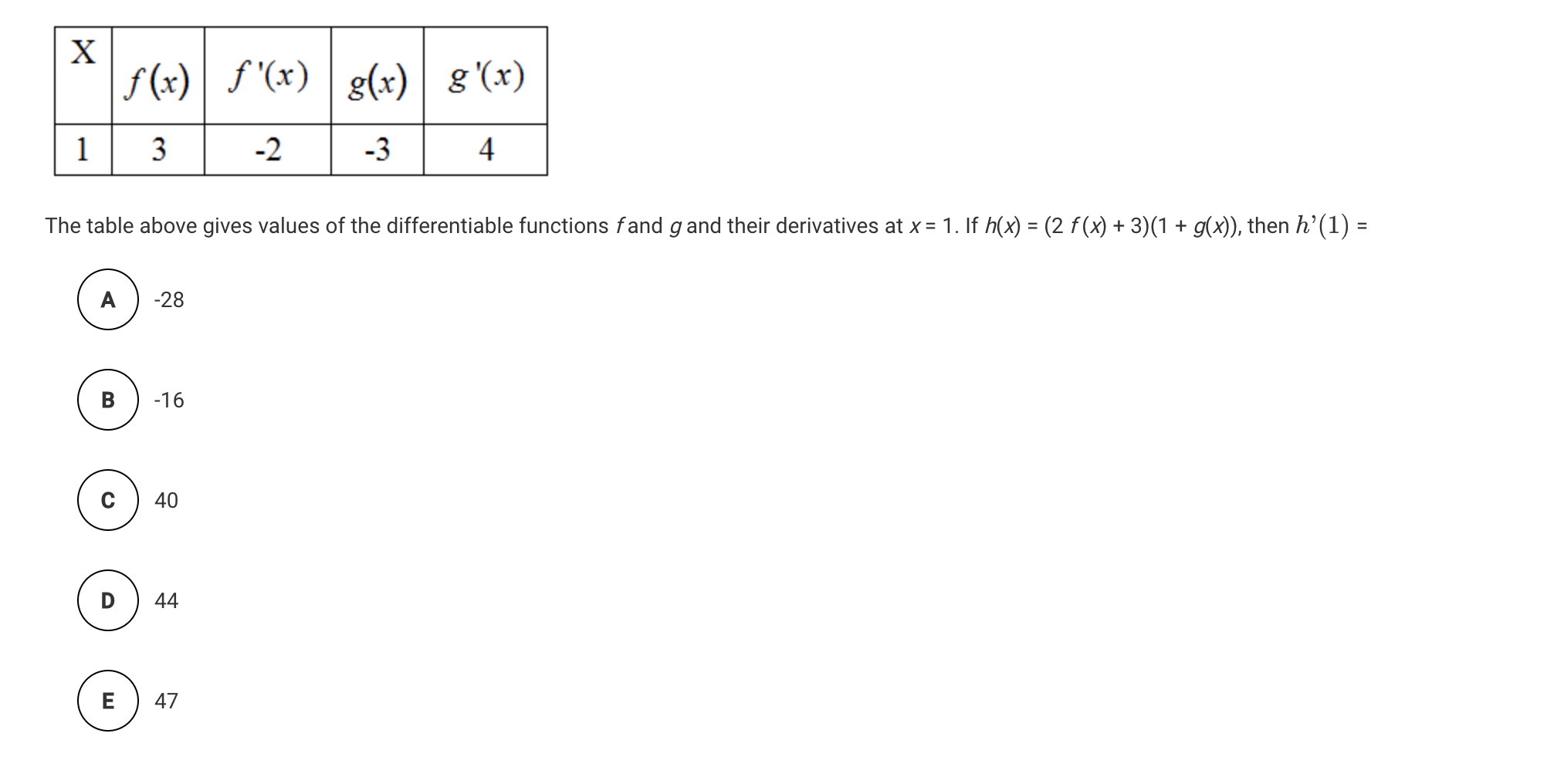



Solved The Table Above Gives Values Of The Differentiable Chegg Com




Ex 1 2 1 Class 12 Maths Show F X 1 X Is One One Onto Where R




The Positive Integers X For Which F X X 3 8x 2 x 13 Is A Prime Is




If Alpha And Beta Are The Zeros Of Quadratic Polynomial F X 3x 2 4x 1 Find A Youtube




Applications Of The Derivative Penn Math Flip Ebook Pages 51 63 Anyflip Anyflip




If F Mathbb R Setminus 0 1 To Mathbb R Satisfies F X 2f Left Frac 1 X Right 3f Left Frac X X 1 Right X Then 8f 4 Mathematics Stack Exchange




If F X 4x 3 3x 2 3x 4 Then X 3f 1 X Isequal To Youtube




Solutions Manual For Calculus For Business Economics And The Social And Life Scienc Brief Edition 11 By Marke Issuu




Discrete Mathematics Solutions To Homework 12 For Each Of The Following Sets Determine Whether 2 Is An Element Of That Set Pdf Free Download



If X 3 8 Then How Do I Find The Value Of X 1 X Quora




If F X 2x 1 If X Gt 1 And X 2 1 If 1 Lt X Lt 1 And If F 1 F 3 F X F 2 F Youtube
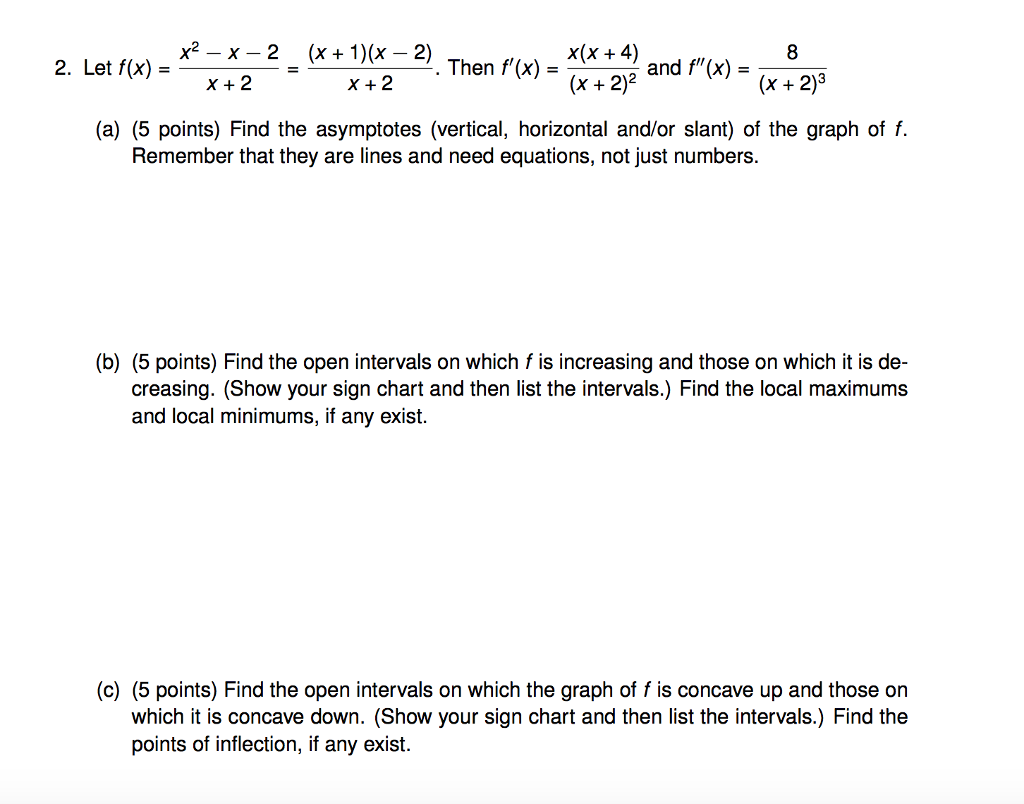



Solved Let F X X 2 X 2 X 2 X 1 X 2 X Chegg Com




If F X 4 2x 2 3x 3x 2 Then The Value Of X For Which F X




If F X 1 X X 3 1 X 3 4 X 2 1 X 2 13 Then The Value Of F 2 3 Brainly In
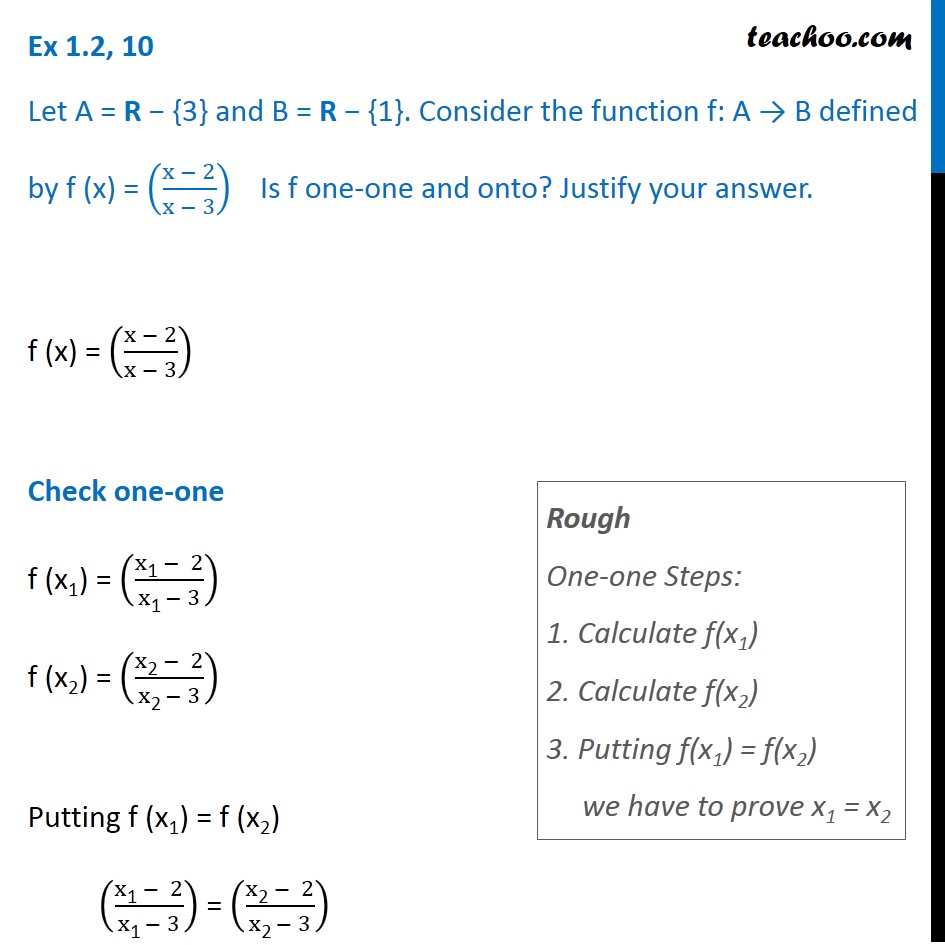



Ex 1 2 10 F X X 2 X 3 Is F One One Onto Class 12



How Do You Sketch The Region Enclosed By The Given Curves And Decide Whether To Integrate With Respect To X Or Y Then Find The Area Of The Region Of 2y 3x




Ex 7 1 22 If F X 4x3 3 X4 F 2 0 Then F X Is




Let F X X 3 5 X 1 4 Then
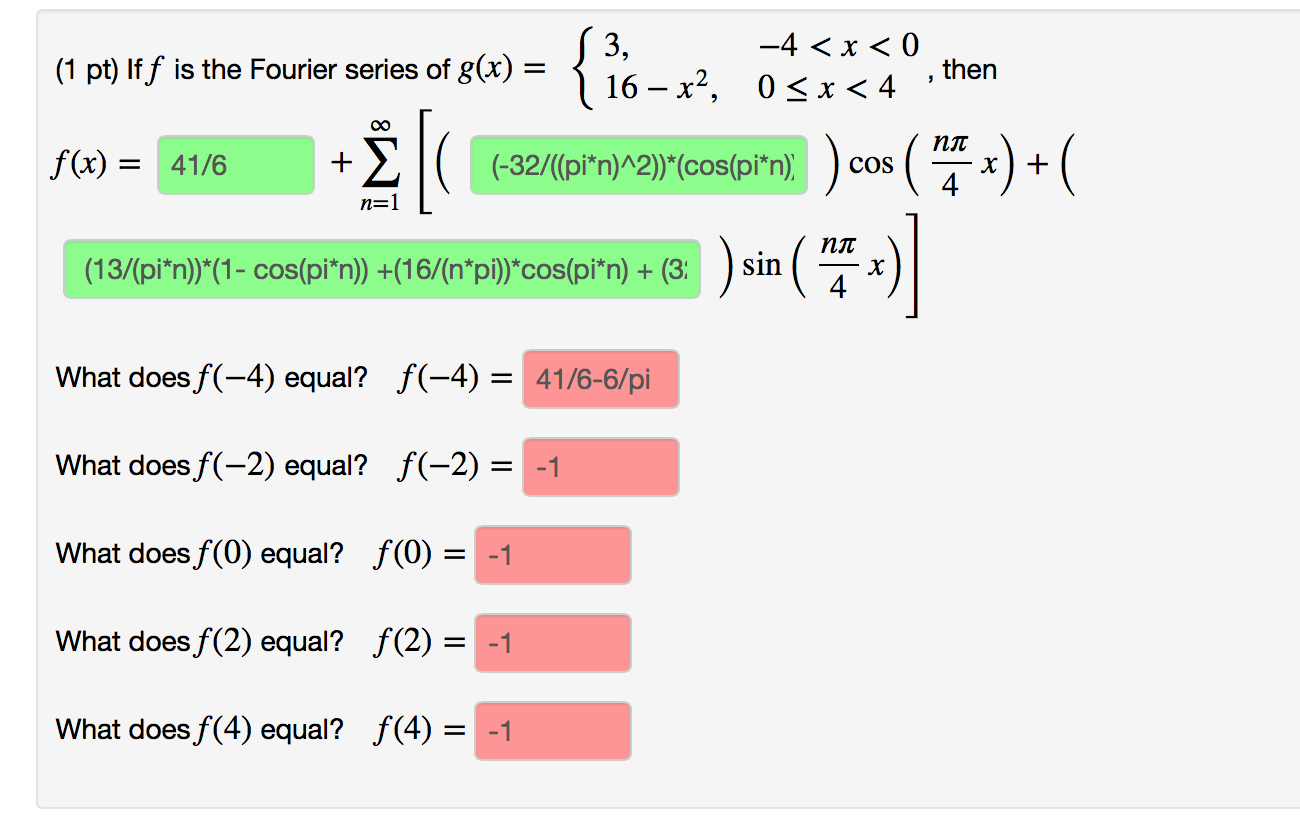



Solved If F Is The Fourier Series Of G X 3 4 X Chegg Com
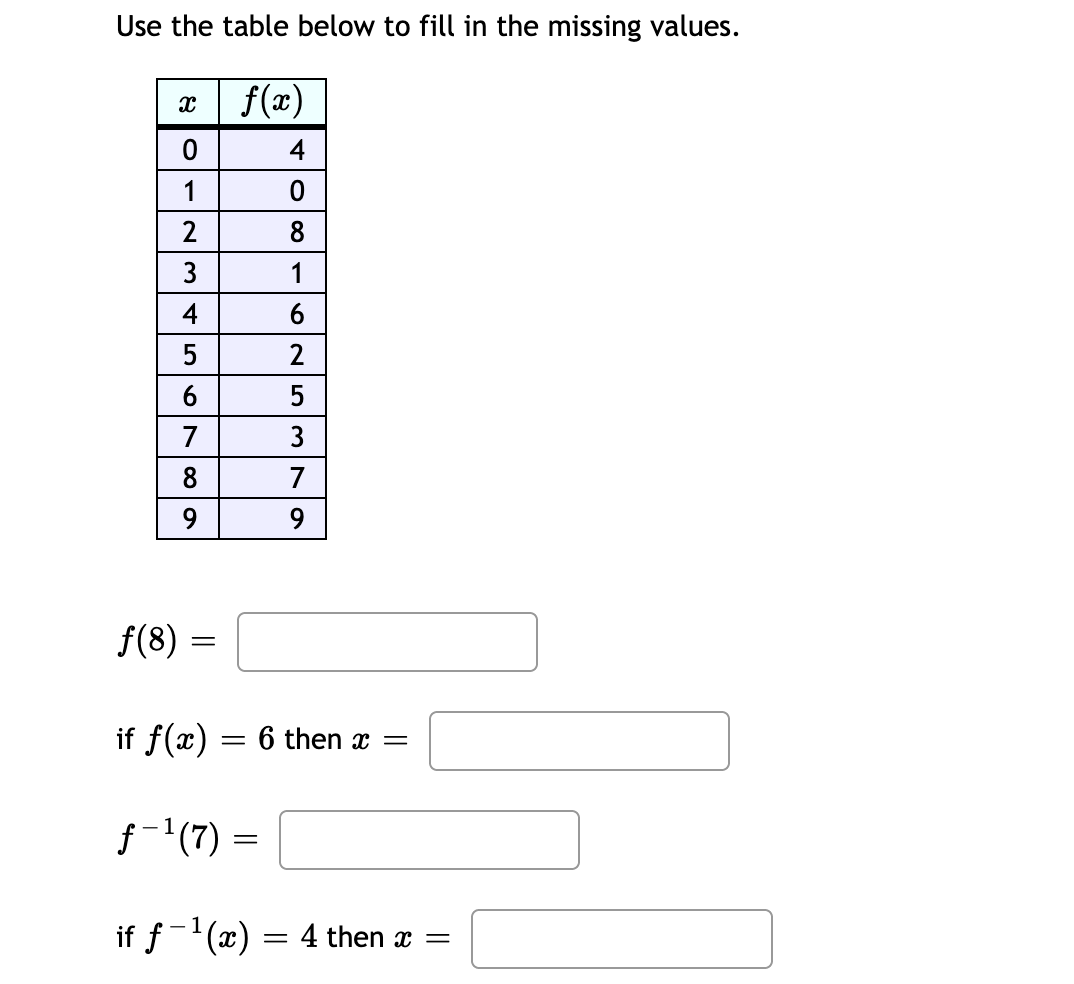



Answered Use The Table Below To Fill In The Bartleby




Let F X X 2 3 4 X 2 3 3 X 4 5 Then D Dx Chegg Com




Using The Formal Definition Each Of Exercises 31 36 Chegg Com




Graphing Parabolas
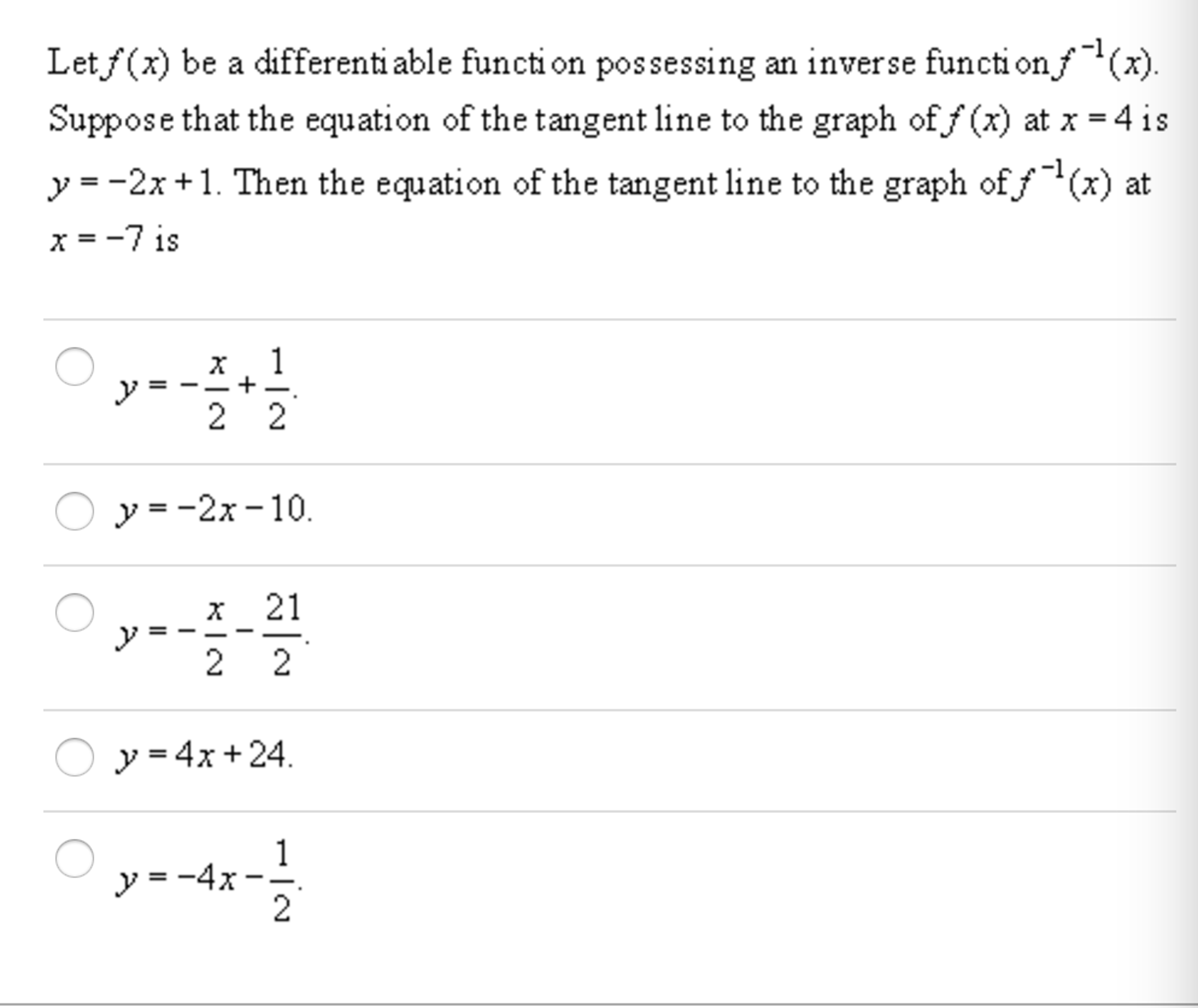



Let F X X 2 3 4 X 2 3 3 X 4 5 Then D Dx Chegg Com




How To Find The Range Of A Function Video Khan Academy




If X 1 A N D F X X 1 X 1 Is A Real Function Then F F




Notes On Topics Of Algebra Notes




Let F X 1 X 0 X 2 3 X 2 Lt X 3 Then Find Fof Fof Means Brainly In




Let F X X 1 1 Sin2pix 2x 2 1 X 3 3x 4 1 If F X




If F X 4x 3 3x 2 3x 4 Then X 3f 1 X Isequal To
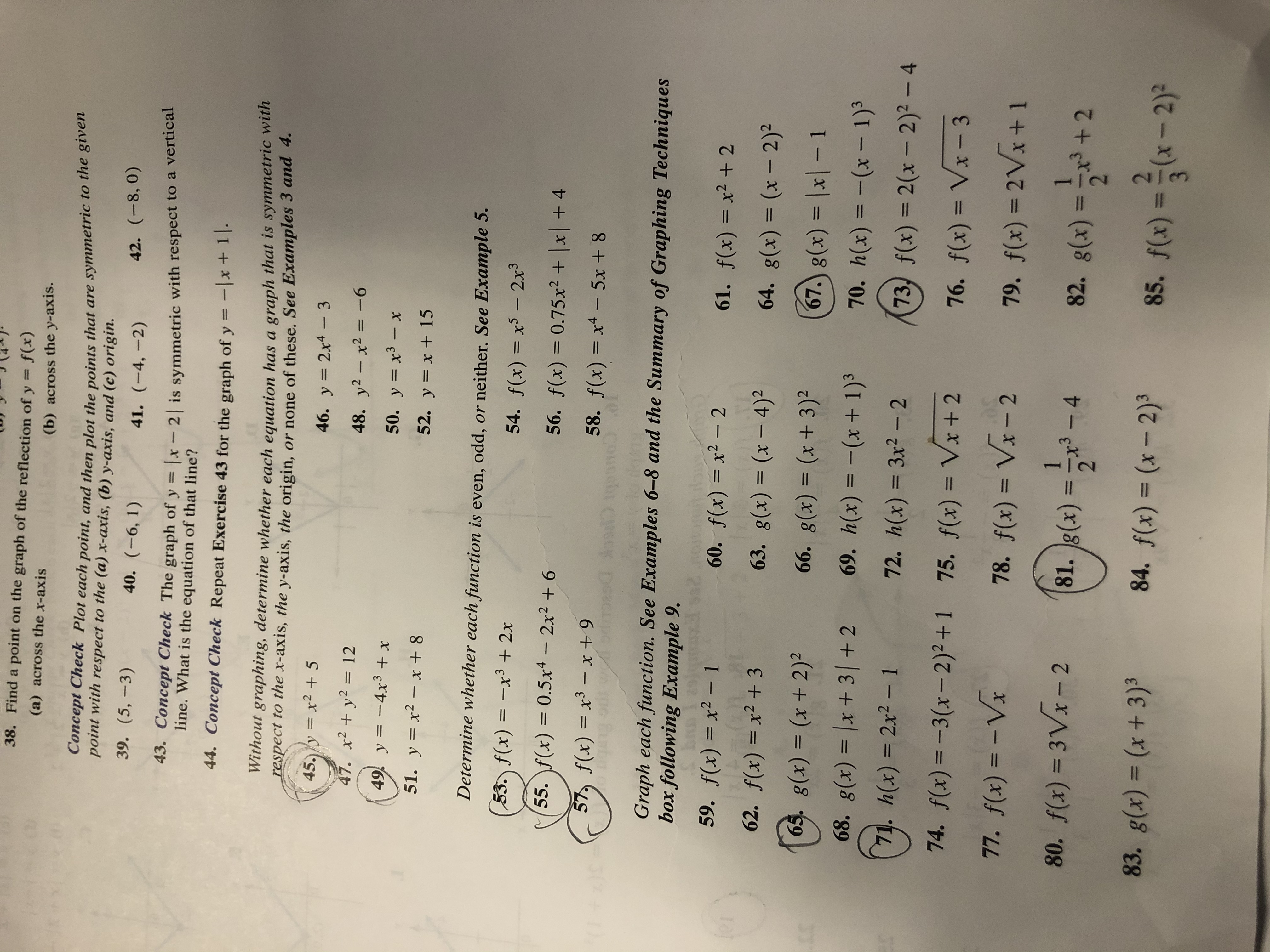



Answered 0 2 2 2 2 2 2 E D F 2 Bartleby
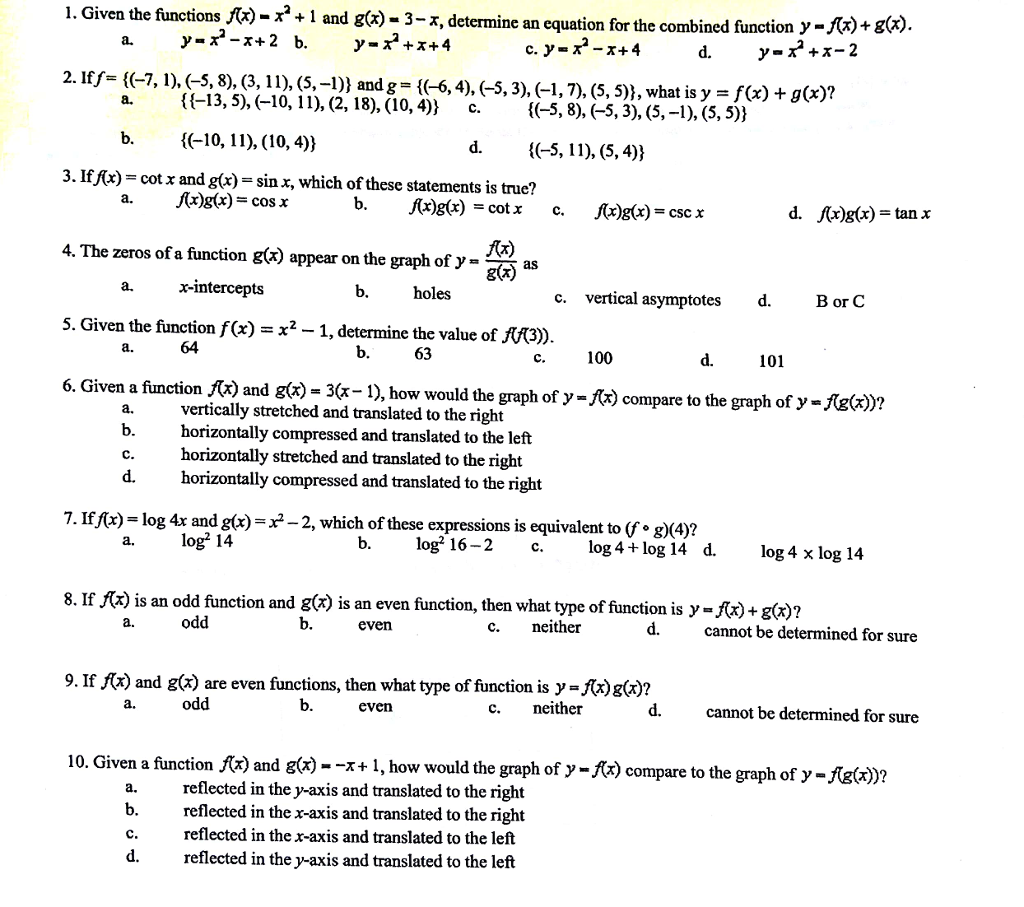



1 Given The Functions F X 7 1 And G X 3 2 Chegg Com




If The Function F R R Defined By F X 4 X4 X 2 Then Show That F 1 X 1 F X And Hence Deduce The Value Of F 14 2f 12 F 34




If F X X 1 4 X 2 3 X 3 2 X 4 Then The Value Of F
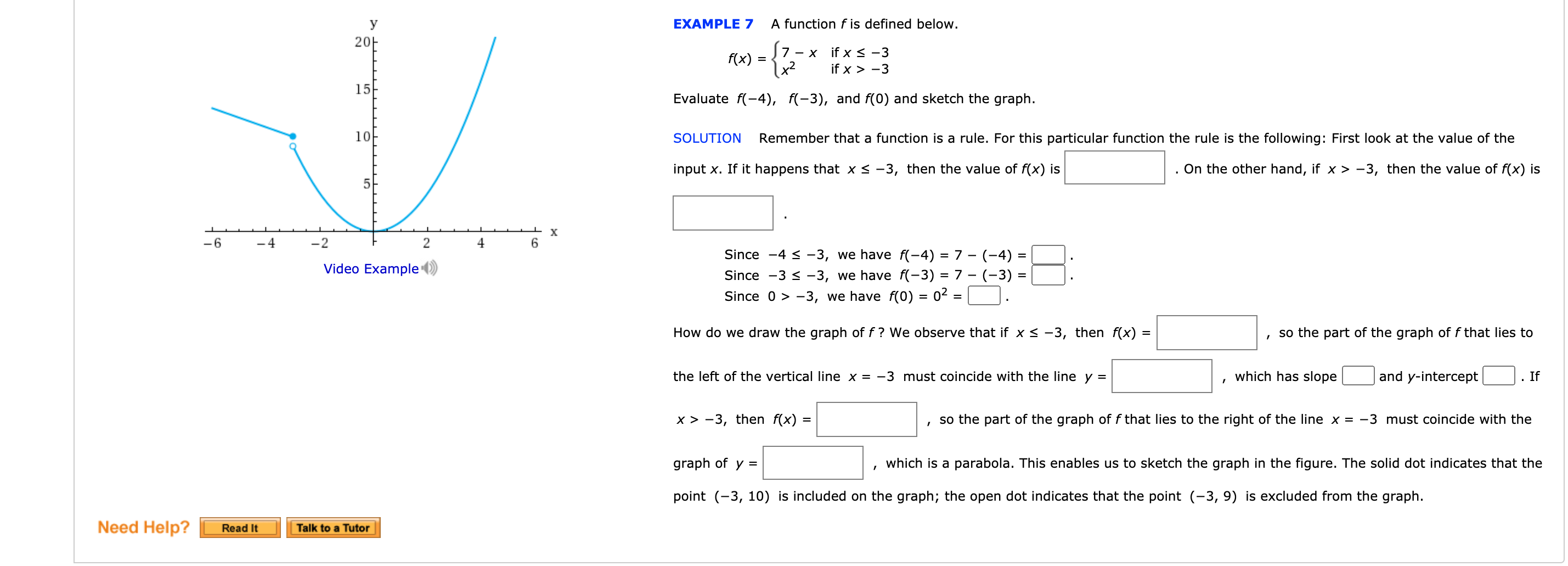



Answered Y Example 7 A Function F Is Defined Bartleby




Fx 15 Isi Ex 2 If The Function F X Defined As 4 64x For




If F X X 2 2 X 4 Then




If F X And G X Are Two Functions With G X X 1 X And F G X
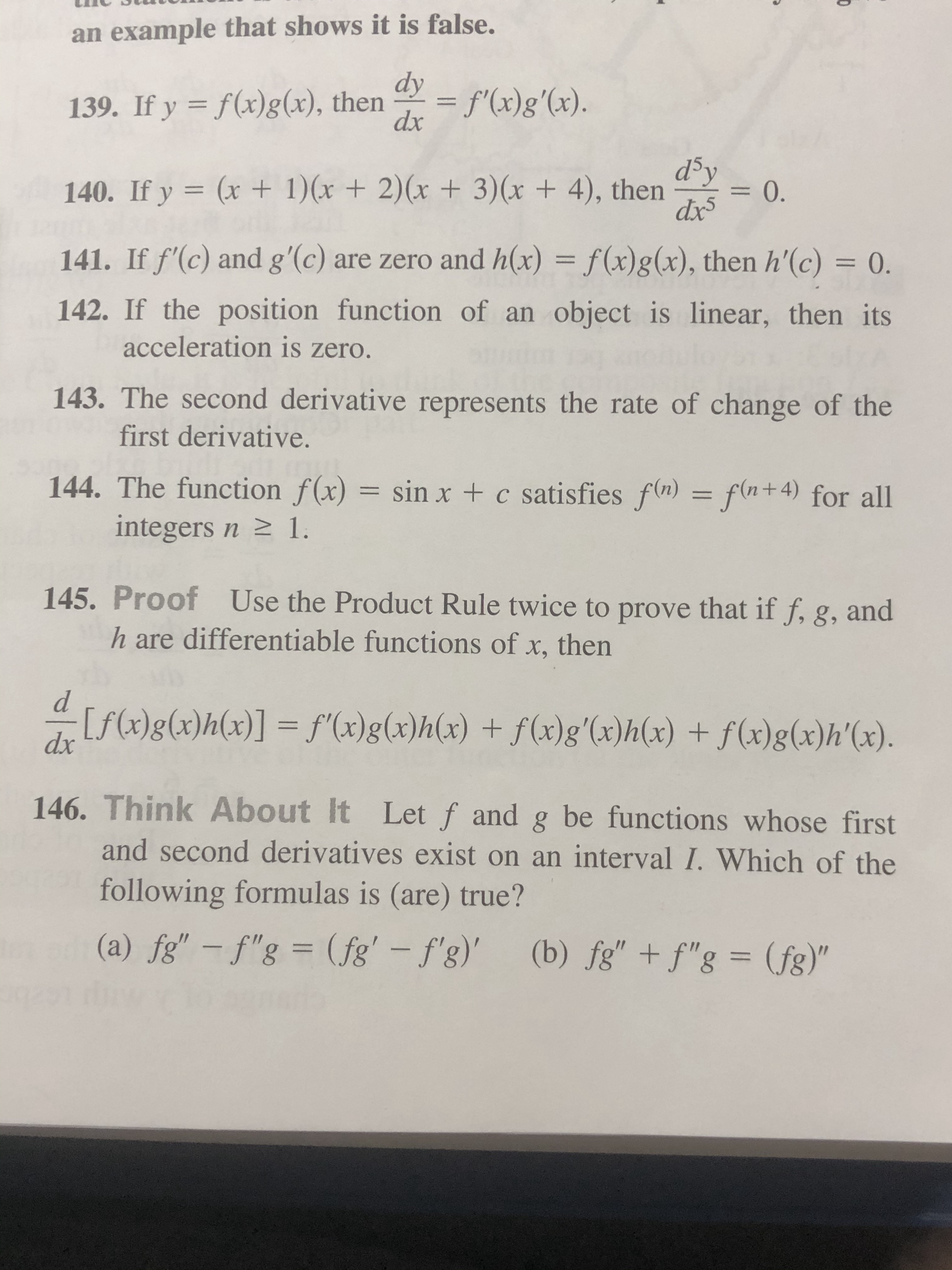



Answered D Y 0 140 If Y X 1 X 2 X Bartleby




Let F X Be A Polynomial Function If F X Is Divided By X 1 X 1 X 2 Then Reminders Are 5 3 And 2 Respectively When F X Is Divided




Solved If F X Equal To X Power 4 4 X Cube 3x Square 2x 1 Then Find Whether Fox F 1 F 2 Brainly In




Math 432 Hw 2 5 Solutions Pdf Free Download




Lesson 1 1 Pages 5 11 State The Domain And Range Of Each Relation Then State Whether The Relation Is A Function Write Yes Or No Pdf Free Download
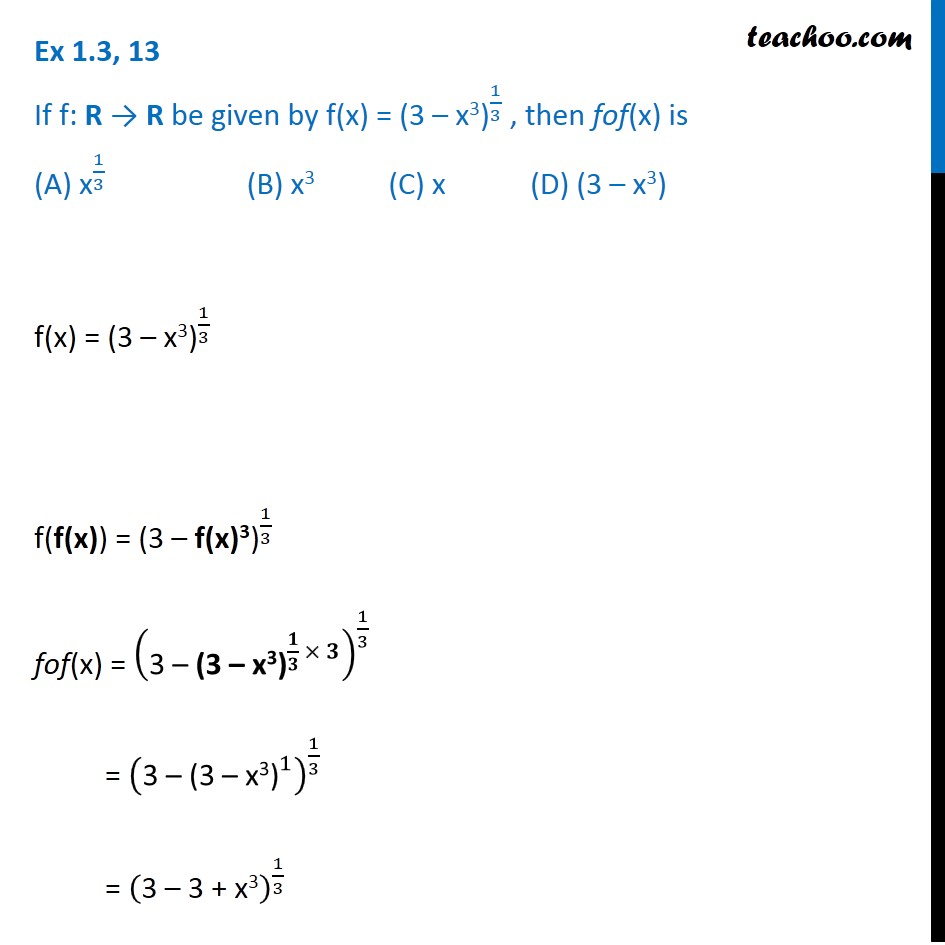



Ex 1 3 13 F X 3 X3 1 3 Then Fof X Is A X1 3



0 件のコメント:
コメントを投稿